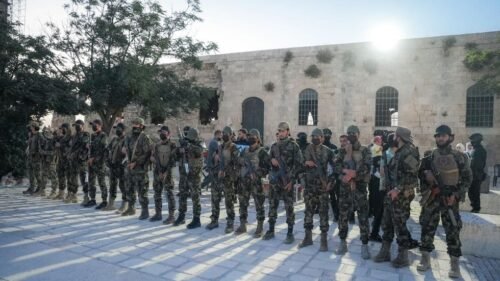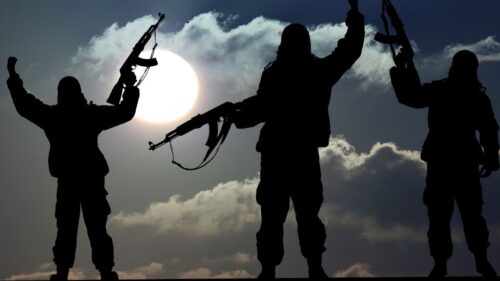Fair Observer Founder, CEO & Editor-in-Chief Atul Singh and foreign affairs analyst William McChesney discuss why millions of Syrian refugees remain unwilling or unable to return home. The conversation explores the history of Syria’s war, the collapse of the Assad regime, the rise of new leadership, regional power plays and the ongoing conditions that continue to prevent large-scale return.
The roots of displacement
The Syrian crisis began in 2011, when Syrian dictator Bashar al-Assad’s government cracked down violently on protests linked to the Arab Spring uprisings. That repression ignited over a decade of civil war, leaving more than half of Syria’s 24–25 million people displaced. Thirteen million Syrians were forced from their homes inside the country, and another six million sought refuge abroad, mostly in Turkey, Lebanon and Jordan.
McChesney explains that the brutality under Bashar exceeded anything Syrians had endured under his father, Hafez al-Assad. As the state lost control, militias filled the vacuum with sectarian violence against minorities. Economic decline, dwindling government legitimacy and waves of internal migration made the country ripe for explosion once protests began.
Assad’s fall and the rise of Ahmed al-Sharaa
Bashar al-Assad, trained as an ophthalmologist, now lives in Moscow after being pushed from power. Years of corruption and repression hollowed out his security apparatus and left his regime unsustainable. By December 2024, the government collapsed, ending the Assad family’s 54-year rule.
Ahmed al-Sharaa, also known as Abu Jolani, filled the gap. A former al-Qaeda member with links to groups in Iraq and Syria, he rose through the al-Nusra Front and later built Hayat Tahrir al-Sham (HTS) into the dominant rebel force in northwest Syria. By the early 2020s, HTS had forged pragmatic ties with Turkey, which viewed the group as a useful tool against Kurdish militias and as a lever of regional influence.
In recent years, al-Sharaa sought to rebrand himself as a more moderate and pragmatic figure. When Assad’s regime collapsed, he stepped into power with little resistance. Yet McChesney notes that authoritarian systems often fail when they can no longer sustain a broad base of support. Corruption eroded Assad’s patronage networks, and without the ability to reward elites, his rule disintegrated.
Turkey, Israel and regional stakes
Turkey’s support for al-Sharaa reflects ambition without direct entanglement. Backing HTS allows the Turkish capital of Ankara to pressure Kurdish groups, extend its influence and pose as a regional problem-solver. Singh raises the idea of a neo-Ottoman revival, but McChesney emphasizes that Turkey’s moves are more tactical than grandiose. Still, many Turks see themselves as better suited than Europeans to redraw the regional order, since colonial borders ignored cultural and tribal realities.
The discussion also touches on Israel. With the Golan Heights firmly under Israeli control, the Mossad — Israel’s national intelligence — counters Turkish influence. McChesney observes that Turkey and Israel are now competing to shape what they see as a broken regional order.
Violence under the new government
Despite the leadership change, al-Sharaa’s government struggles to control Syria. Violence continues: In spring, government forces attempted to move into the city of Latakia, an Alawite stronghold. The campaign devolved into sectarian killings, with militias executing residents based on religious identity. McChesney warns that relying on irregular fighters almost guarantees bloodshed, shaking hopes of recovery.
In the Suwayda region, which is home to the Druze and Bedouin tribes, unrest erupted into massacres when government forces allegedly sided with Bedouin militias. Once again, sectarian tensions flared instead of calming.
Additionally, Israel bombed Syria’s defense ministry, citing ties with the Druze religious group. While local Druze condemned the attack, the strike risked fueling resentment against them within Syria.
Why refugees do not return
Ethnic violence is one factor discouraging return, but McChesney and Singh outline a wider set of obstacles:
- Regional conflict: Israeli clashes with the Hezbollah and Hamas militant groups keep the borders volatile. Strikes on crossings into Lebanon have blocked routes home, while Israel’s hold over the Golan Heights deters resettlement.
- Loss of aid: The dismantling of US-sponsored international aid under US President Donald Trump crippled support for refugees and recovery, deepening despair.
- Prewar strain: Even before 2011, drought and economic hardship pushed rural Syrians into crowded cities, fueling resentment and unrest.
- Economic collapse: Today, Syria’s GDP is negligible, jobs are scarce and infrastructure remains shattered. Refugees prefer hardship abroad to extreme uncertainty at home.
- Fear of renewed displacement: If Syria destabilizes further, those who return risk being uprooted again. Many host countries will not allow reentry, leaving families trapped.
- Assimilation abroad: After a decade in exile, children grow up speaking Turkish or other local languages, not formal Arabic. Families build livelihoods and social networks abroad, making uprooting less feasible.
Singh draws a parallel with Italian immigrants to the United States. Even when life was hard, families stayed because their children adapted, and home remained poorer.
Legal gray zones and host country pressures
In Turkey, Lebanon and Jordan, refugees face precarious status. None of these countries signed the 1951 United Nations Refugee Convention. Only 17% of Syrians in Turkey have legal recognition, leaving most in a shadow economy vulnerable to exploitation. Nationalist politicians blame Syrians for economic problems, stoking hostility. Social media campaigns in Turkey spread racist narratives that Syrians are “taking jobs,” echoing anti-immigrant tropes worldwide.
The road ahead
McChesney concludes grimly: Little suggests improvement. Violence persists, Israel shows no signs of deescalation and US support for aid has not returned. Al-Sharaa appoints parliament members directly, mirroring Assad’s old authoritarianism. Instead of reconciliation, Syria faces cantonization — fragmentation along ethnic lines.
Refugees, meanwhile, sink deeper roots in their host societies. Few see a viable path home. The likely future is not return but permanent resettlement abroad, with displacement numbers possibly rising as Syria continues to unravel. Singh closes by expressing his hope against the odds that conditions in Syria might one day improve.
[Lee Thompson-Kolar edited this piece.]
The views expressed in this article/podcast are the author’s own and do not necessarily reflect Fair Observer’s editorial policy.

















Comment